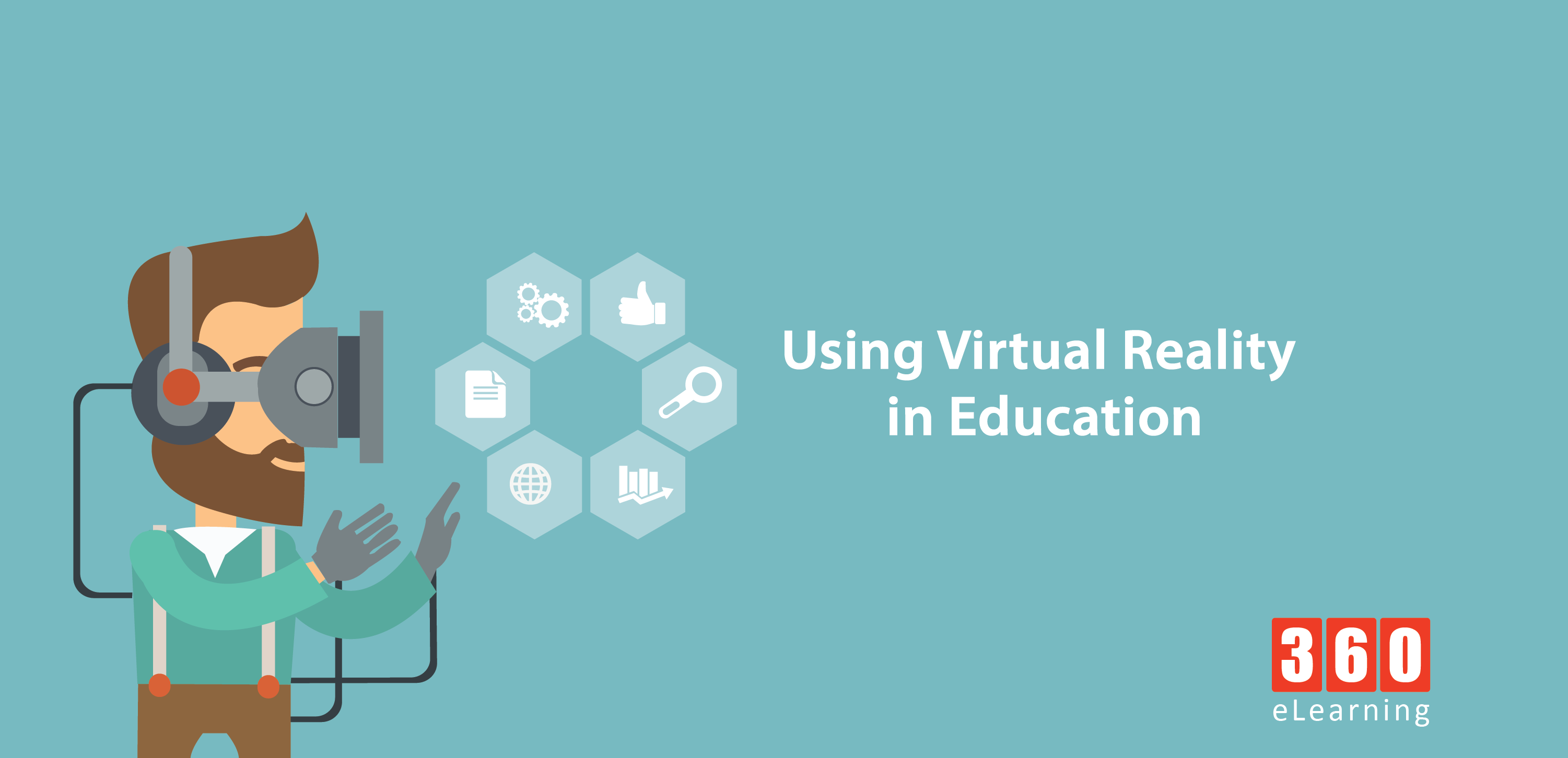Virtual reality (VR) mostly refers to computer technologies that use software + hardware to generate the realistic images, scene, sounds and other sensations that can replicate a real time environment (or create an imaginary environment). The definition of virtual reality comes from the definitions for both ‘virtual’ and ‘reality’. The definition of ‘virtual’ is near and reality is what we experience as human beings. So the term ‘virtual reality’ basically means ‘near-reality’. This could, of course, mean anything but it usually refers to a specific type of reality emulation. A person using virtual reality equipment is able to “look around” the artificial world, move about in it and interact with features or items that are depicted on a screen or in goggles. Most 2016-era virtual realities are displayed either on a computer monitor, a projector screen, or with a virtual reality headset (also called head-mounted display or HMD).
Virtual Reality and Learning:
When you think of higher education, chances are that virtual reality is not something that immediately comes to mind. In recent years, online learning has changed the face of education by becoming a supplement to traditional methods, allowing people to learn at a distance, on their own time and at their own pace. Despite these advantages, online education has proven to be a double-edged sword. At some point in their learning, every student needs personal help that interactive workbooks and textbooks alone cannot provide. Classrooms and lectures allow students to engage with their professors, teaching assistants and with each other. Virtual worlds promise to deliver the best aspects of both real-world classrooms and online distance learning into a single platform. With tools that provide avatars that represent the educators and the students, voice and video capabilities, power point and other collaborative whiteboard technologies and group and private messaging chat, educators are finding that the newest generation of virtual worlds can simplify the lecture and presentation process, allow students to ask/answers questions to their teacher or each other (without interrupting the lecture), socialize and learn in a very streamlined manner.
Strengths of Virtual Reality in Learning
- Immersive
- Engaging
- No distractions
- Experience
- Stronger memories & recall
- Simulation
- Free to fail
- Empathy
Weaknesses of Virtual Reality
- Not suitable for all
- Motion sickness
- Astigmatism
- Quality is expensive
- No standards
- Limited content
- Bulky headsets
- “no hands”
VR’s Future:
- VR is here to stay, But will take a few years to become mainstream
- Apple still haven’t announced a VR platform
- 5G mobile networks are being designed with VR in mind
- User-friendly non-coding content authoring software needed to be developed
- Web Virtual Reality is strongly recommended for cooperate learning.
VR Popular Resources:
RoadtoVR.com: latest news and daily round-up
YouTube 360: immersive 3D video
WeARvr.com: multiplatform content, including an ‘educational’ collection
Conclusion:
- VR has huge potential for learning. It creates engagement, interest and even long term recall after several months
- Experience gives insight. There’s no substitute for experiencing VR for yourself – you can’t describe it. Watch out for others who talk about VR without experience
- VR is still an emerging technology. No open VR standards beware VR vendor’s walled gardens
- Graphics are the most expensive part of creation. To reduce costs, try to minimize scenes or reuse scenes. Alternatively use a photosphere
- Quality and Design still rule. VR isn’t suitable for everything. Storyboard and design content VR isn’t the magic bullet: poor content is still poor content in VR
- VR doesn’t sell itself. It still needs promotion. Don’t just mail out google cardboards with a QR code and expect people to run with it. Don’t get caught up in own excitement
- Think about distribution channels. This isn’t HTML5 It’s not as easy as mobile learning VR content is more similar to native apps and vendor specific


